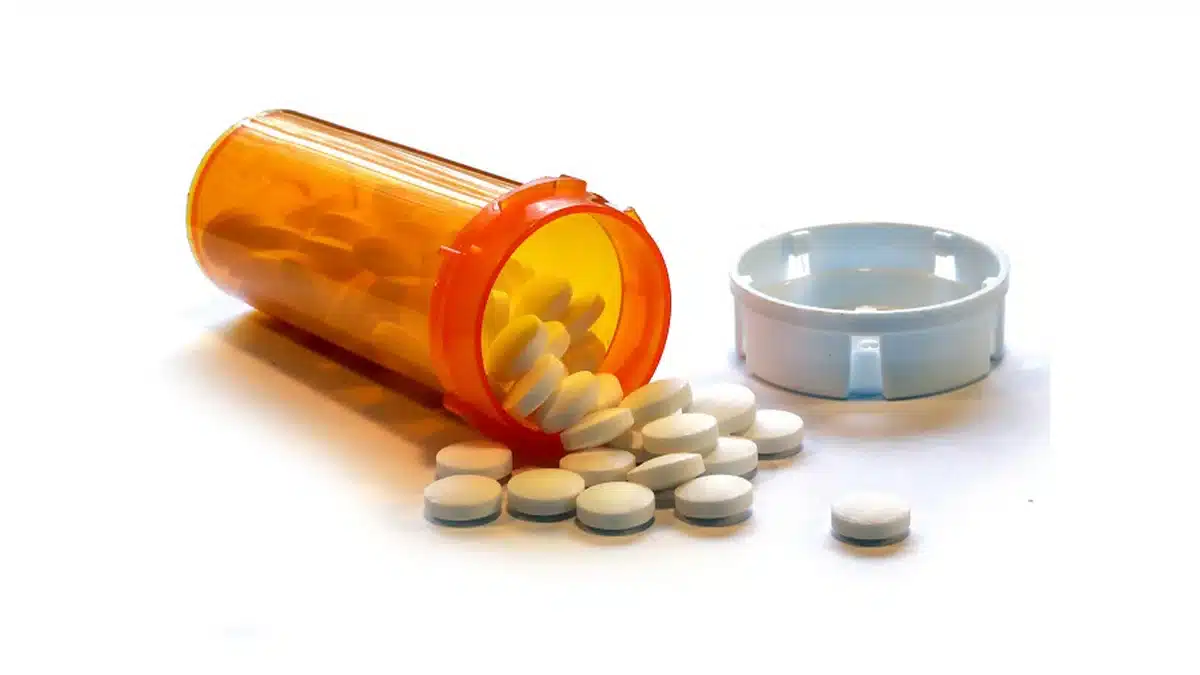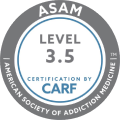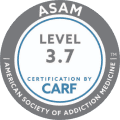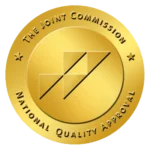Opioid withdrawal can be a difficult journey for individuals aiming to break free from opioid addiction. The symptoms, ranging from muscle aches to anxiety and insomnia, make it challenging to abstain from using opioids.
Fortunately, various medications are available to help ease the discomfort of opioid withdrawal, making the journey to sobriety more manageable. Continue reading as we explore the different opioid withdrawal medications!
Key Takeaways
Opioid withdrawal is challenging, but medications and support can ease the process. Here is what this article covers:
- Opioid withdrawal involves challenging symptoms like nausea and anxiety, making it difficult to break free from addiction.
- Medicines such as methadone and buprenorphine help manage severe withdrawal symptoms and cravings, aiding in recovery.
- Counseling and therapy sessions address the psychological aspects of addiction and complement medications.
The Haven Detox-South Florida offers comprehensive substance use disorder (SUD) treatment options. Contact us at (561) 328-8627 for detailed information!

Understanding Opioid Withdrawal
Opioid withdrawal refers to the series of symptoms that occur when a person who is dependent on opioids suddenly stops or significantly reduces their opioid use. Opioids are a class of drugs that include prescription opioids like oxycodone, hydrocodone, and morphine, as well as illegal drugs like heroin.
Common symptoms of opioid withdrawal include:
- Flu-like symptoms: These can include body aches, muscle pain, joint pain, and general feelings of malaise.
- Gastrointestinal Issues: Nausea, vomiting, diarrhea, and stomach cramps are common during opioid withdrawal.
- Sweating: Excessive sweating, particularly during the night, is a common symptom.
- Insomnia: Facing trouble falling asleep or staying asleep is a common symptom during withdrawal.
- Anxiety And Agitation: Feelings of anxiety, restlessness, and agitation are common psychological symptoms.
- Yawning And Teary Eyes: Frequent yawning and tearing up of the eyes are often observed during opioid withdrawal.
- Goosebumps: Skin may become “goosebumpy” or develop piloerection, giving the appearance of “goose flesh.”
- Dilated Pupils: Pupils may become larger than usual.
- High Blood Pressure And Rapid Heartbeat: Cardiovascular symptoms such as increased blood pressure and heart rate can occur.
- Drug Cravings: Intense cravings for opioids are common during withdrawal, which can contribute to the difficulty of quitting.
These symptoms typically show up within a few hours to a couple of days after the last use of opioids. They can vary in severity depending on various factors such as the type of opioid drug used, the duration of use, the dosage, and individual differences in metabolism and physiology.
Managing opioid withdrawal usually involves the use of medications approved by the United States Food and Drug Administration (FDA) under medical supervision. Additionally, counseling and therapy can be valuable components of the treatment of opioid dependence.
Types of Opioid Withdrawal Medications
Medications play a vital role in managing opioid withdrawal symptoms, helping people transition to a drug-free state more comfortably. Here are some commonly used medications for opioid withdrawal management:
Methadone
Methadone is a long-acting synthetic opioid agonist that helps alleviate withdrawal symptoms by activating the same opioid receptors in the brain that other opioid drugs target. It has a slower onset and longer duration of action compared to drugs like heroin, making it helpful in tapering off opioids gradually. Methadone maintenance therapy is often used as a long-term treatment for opioid dependence.
Buprenorphine
Buprenorphine is a partial opioid agonist, meaning it activates opioid receptors but to a lesser extent than full agonists like heroin or methadone. This property helps in reducing cravings and symptoms of withdrawal without producing the same level of euphoria or respiratory depression as full agonists. Buprenorphine is often used in medication-assisted treatment (MAT) alongside behavioral therapy and counseling.
Naltrexone
Unlike methadone and buprenorphine, which are opioid agonists, naltrexone is an opioid antagonist. It works by blocking opioid receptors, effectively preventing opioids from binding to them and producing their effects. Naltrexone is commonly used after detoxification to help prevent relapse by lessening the rewarding effects of opioids. It is available in both oral and injectable forms.
Clonidine
Clonidine is not an opioid, but it is commonly used off-label to alleviate some of the symptoms of opioid withdrawal, such as agitation, anxiety, muscle aches, and sweating. It works by reducing sympathetic nervous system activity, which helps manage withdrawal symptoms. Clonidine is often used adjunctively with other medications for more comprehensive symptom relief.
Lofexidine
Lofexidine is a selective alpha-2 adrenergic agonist that is FDA-approved specifically for the management of opioid withdrawal symptoms. Similar to clonidine, lofexidine reduces sympathetic nervous system activity, leading to a reduction in withdrawal symptoms such as muscle aches, sweating, and agitation. It is typically used for short-term relief during the acute withdrawal phase.
Benzodiazepines
Benzodiazepines, a class of drugs, are commonly used to treat anxiety, insomnia, and muscle spasms. While they are not specifically approved for opioid withdrawal, they may be prescribed in some cases to help manage anxiety, insomnia, and agitation associated with withdrawal. However, their use in opioid withdrawal is controversial due to the risk of dependence and the potential for misuse.
Remember, the choice of medication depends on the individual’s specific needs and medical history. Additionally, these medications are often used as part of a comprehensive treatment approach for opioid use disorder (OUD).
Role of Counseling and Therapy Alongside Medication
While medications can help manage opioid withdrawal symptoms and cravings, counseling and therapy address the underlying psychological, social, and behavioral aspects of addiction.
Individual Counseling
Individual counseling provides a safe and confidential space for individuals to explore their thoughts, feelings, and experiences related to drug use and addiction. A therapist can help clients set goals, develop relapse prevention strategies, address co-occurring mental illnesses, and navigate challenges in recovery. Individual counseling fosters self-awareness, motivation, and personal growth, empowering individuals to make positive changes.
Group Therapy
Group therapy involves bringing together individuals with similar experiences of substance abuse to share insights, provide support, and learn from each other. Group therapy sessions may focus on topics such as coping skills, communication, relationships, and recovery milestones. Peer support and encouragement in group settings can reduce feelings of isolation, shame, and stigma commonly associated with addiction.
Family Therapy
Family therapy involves family members participating in the treatment process to address dysfunctional patterns of communication, conflict, and enablement that may contribute to or result from addiction. It helps improve family dynamics, rebuild trust, set boundaries, and strengthen support systems for recovery. Involving family members in treatment can enhance the effectiveness of interventions and promote long-term success in recovery.
By combining medicines with counseling and therapy, individuals can achieve lasting recovery and build a fulfilling life free from the grip of addiction.
Frequently Asked Questions (FAQs)
How do you prevent withdrawal symptoms?
In order to prevent withdrawal symptoms, it’s essential to gradually reduce the intake of the substance causing dependence under medical attention. Stay hydrated, maintain a well-balanced diet, and engage in regular exercise. Seek support from friends, family, or support groups.
Avoid triggers that may lure you to relapse. Keep yourself occupied with hobbies or activities you enjoy. Openly communicate with your healthcare provider about any challenges or concerns you may face during the process. Remember, recovery from addiction is a journey, and seeking help along the way is okay.
What is the drug naltrexone used for?
Naltrexone is a medication prescribed to treat alcohol and opioid dependence. It functions by blocking the effects of alcohol and opioids in the brain, reducing cravings and the desire to use these substances. By blocking the pleasurable effects, it helps individuals stay sober and avoid relapse.
Naltrexone can be taken orally in pill form or injected once a month. It is often used as part of a comprehensive addiction treatment program that involves counseling and support. It’s important to follow your doctor’s instructions carefully while taking naltrexone to maximize its effectiveness.
What non-opiate medications help with opiate withdrawal?
Several non-opiate medications alleviate opiate withdrawal symptoms. Clonidine treats anxiety, agitation, and high blood pressure. Methadone and buprenorphine ease cravings and withdrawal discomfort. Naltrexone blocks opiate effects, reducing urges.
Lofexidine tackles symptoms like muscle aches and sweating. Gabapentin helps with severe pain, anxiety, and sleep disturbances. These meds assist individuals through withdrawal, making the process more manageable. Always consult with healthcare providers for proper guidance and dosage.
Find Hope At The Haven Detox-South Florida
If you’re grappling with opioid use disorder (OUD), know this: a brighter tomorrow is within reach. At The Haven Detox-South Florida, we’re here to guide you toward healing and hope.
Our comprehensive treatment services begin with a compassionate medical detox program, where we help your body rid itself of harmful toxins. From there, our residential rehab program offers round-the-clock, intensive care to support your journey to recovery.
During treatment at our rehab center, our patients experience a well-balanced blend of proven therapies, appropriate medications, NAD IV therapy, and holistic approaches tailored to their unique needs.
Don’t wait another day to reclaim your life. Call us at (561) 328-8627 and take the first step towards a brighter, healthier future.








